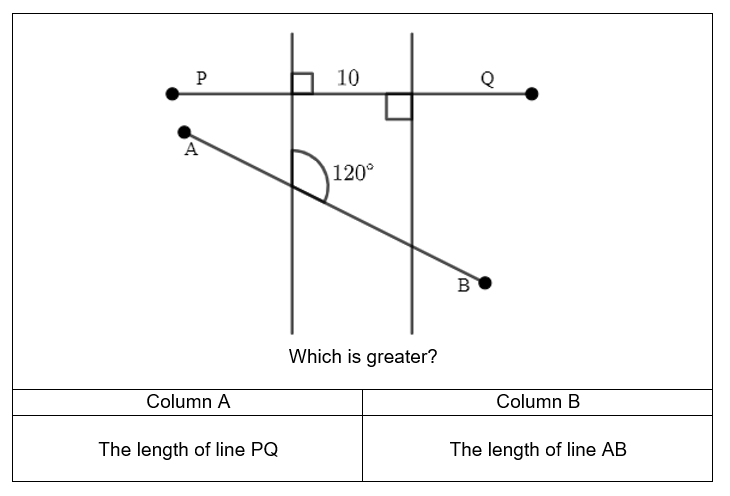The SCAT test is an exciting opportunity for children to qualify for gifted programs like the Johns Hopkins Center for Talented Youth (CTY).
Understanding the test format and practicing with the right materials helps strengthen essential reasoning skills, setting your child up for success.
It’s more than just aiming for a high score—it’s about developing abilities and self-assurance that will serve them well beyond the test.
This guide provides practical strategies, sample questions, and tips to help you support your child every step of the way.
Let’s get started and give them the tools they need to shine.

Hey there! Do you have a question about the test or our practice package? Email me at roman@staggingapps.website . I'm here to help your child succeed!
The School and College Ability Test (SCAT) is a standardized assessment that measures verbal and quantitative reasoning skills, specifically designed to identify gifted students. Understanding its purpose and structure is key to preparing effectively and achieving strong results.
The test assesses students in grades 2 through 12, serving as an above-grade-level test to highlight advanced academic potential. It plays a vital role in determining eligibility for gifted education programs.
The SCAT is divided into three levels:
Each level includes two sections:
Each section contains 55 multiple-choice questions, including 5 unscored experimental questions, with a 22-minute time limit per section. A short break is available between sections.
The assessment evaluates students’ verbal and quantitative reasoning skills. Understanding its scoring system is essential for interpreting results and assessing academic potential.
This is an above-grade-level assessment, meaning students are evaluated against norms established for higher grade levels. This design helps identify gifted students by comparing their performance to that of older peers. The comparison framework is as follows:
| Student’s Current Grade | SCAT Test Level | Compared To Grade Level |
| 2nd Grade | Elementary | 4th Grade |
| 3rd Grade | Elementary | 5th Grade |
| 4th Grade | Intermediate | 6th Grade |
| 5th Grade | Intermediate | 8th Grade |
| 6th Grade | Advanced | 9th Grade |
| 7th Grade | Advanced | 12th Grade |
| 8th Grade | Advanced | 12th Grade |
SCAT scores are determined through a three-step process:
This is the total number of correctly answered questions out of 50 in each section. For example, answering 30 questions correctly results in a raw score of 30/50.
The raw score is converted into a scaled score ranging from 400 to 514, depending on the test version. This conversion accounts for slight differences between test forms, allowing for consistent comparisons across different test versions. The scaled score is used to compare a student’s performance to that of other students within the same grade level.
The evaluation is administered at three levels, each with specific score ranges:
| Verbal | Quantitative | |
| Elementary Level (Grades 2–3): | 401–471 | 412–475 |
| Intermediate Level (Grades 4–5): | 405–482 | 419–506 |
| Advanced Level (Grades 6 and Above): | 410–494 | 424–514 |
These ranges provide a framework for interpreting individual scores within each test level.
The scaled score is then compared to a normative sample of students in higher grades to determine the percentile rank. This percentile indicates how a student’s performance compares to that of older peers, reflecting the test’s design as an above-grade-level assessment.
A “good” score is context-dependent, varying based on the objectives of the assessment and the specific programs for which a student seeks eligibility.
Many programs, such as those offered by the Johns Hopkins Center for Talented Youth (CTY), have established minimum qualifying scores. For instance, a 2nd grader may need a verbal score of 430 or a quantitative score of 435 to qualify. These benchmarks increase with each grade level.
Higher percentile ranks indicate stronger performance relative to the normative sample. For example, scoring in the 90th percentile suggests the student performed better than 90% of the higher-grade normative group. Such high percentiles often correlate with eligibility for more competitive programs.
It’s important to note that SCAT percentile ranks have not been updated since 1979. Therefore, current students are compared to a national sample from that time, which may affect the interpretation of what constitutes a “good” score.
In summary, while higher scaled scores and percentiles are advantageous, the definition of a “good” SCAT score should be aligned with the specific requirements of the desired educational programs and the comparative performance of the normative sample.
The School and College Ability Test is a critical factor in determining eligibility for programs offered by the Johns Hopkins Center for Talented Youth (CTY). Understanding the required scores and the opportunities they provide helps families plan their child’s academic journey effectively.
CTY programs use assessment scores to assess eligibility for different academic levels. Students must meet or exceed the minimum scores in either the Verbal or Quantitative sections to qualify for specific programs. The required scores vary by grade and program tier:
Below are the minimum scores required for CTY-Level and Advanced CTY-Level eligibility:
Grade Level | CTY-Level Verbal Score | CTY-Level Quantitative Score | Advanced CTY-Level Verbal Score | Advanced CTY-Level Quantitative Score |
2 | 428 | 433 | 438 | 443 |
3 | 433 | 438 | 443 | 448 |
4 | 438 | 445 | 448 | 458 |
5 | 443 | 455 | 453 | 470 |
6 | 448 | 468 | 458 | 480 |
7 | 453 | 473 | 463 | 488 |
8 | 458 | 480 | 470 | 495 |
9+ | 463 | 488 | 478 | 503 |
Grade Level | CTY-Level Verbal Score | CTY-Level Quantitative Score | Advanced CTY-Level Verbal Score | Advanced CTY-Level Quantitative Score |
2 | 430 | 435 | 440 | 445 |
3 | 435 | 440 | 445 | 450 |
4 | 440 | 447 | 450 | 460 |
5 | 445 | 457 | 455 | 472 |
6 | 450 | 470 | 460 | 482 |
7 | 455 | 475 | 465 | 490 |
8 | 460 | 482 | 472 | 497 |
9+ | 465 | 490 | 480 | 505 |
Qualifying test scores unlock a variety of enrichment opportunities:
Each program is designed to nurture a student’s academic growth and potential. Eligibility levels determine the depth and complexity of the courses available.
Help your child prepare with a complete practice package designed to maximize their performance on the SCAT test.
The Elementary & Intermediate Levels Will Be Available in the Summer of 2025
Preparing your child for the SCAT requires understanding their unique abilities and the specific demands of the test.
Incorporating effective strategies, such as timed practice tests and focused review sessions, helps build their confidence and readiness for the advanced-level content.
Practice tests offer unique advantages that help students approach the test with greater ease and readiness:
The SCAT is an above-grade-level assessment, meaning it evaluates your child on content designed for students in higher grades. Standard grade-level materials won’t provide the challenge or preparation needed to succeed on this test.
SCAT-specific resources, which include advanced analogies and higher-level math concepts, help your child become familiar with the difficulty and scope of the questions they will face.
Choosing these tailored materials ensures that their preparation aligns with the demands of the exam, boosting their readiness and confidence.
Identifying your child’s weak areas is the first step toward balanced preparation across all test sections. Begin by conducting a diagnostic assessment or reviewing their past performance to pinpoint specific challenges. Use this information to create a focused preparation plan that addresses these challenges while ensuring comprehensive coverage of all test sections.
Break down preparation into core categories:
Gradually progress from foundational concepts to advanced-level problems.
Sample Question:

A. Column A is greater
B. Column B is greater
C. The two values are equal
D. Not enough information is given
The correct answer is (B).
To compare the values, we need to consider the given angles of the lines AB and PQ with respect to the parallel lines.
Notice that line PQ is perpendicular to the two parallel lines while line AB forms a 120 degrees also intercepting the two parallel lines.
However, line PQ is perpendicular which also means that it is the shortest distance between the two parallel lines which is 10 units. Now, any line that is not perpendicular intercepting the two lines will be greater than line PQ.
Therefore, line AB is greater than line PQ.
Prioritize analogy types like:
Make practice engaging with tools like word games or guided exercises. Encourage your child to think critically about word relationships to enhance reasoning skills.
Sample Question:
impoverished : wealth ::
A. parched : thirst
B. starving : food
C. deprived : comfort
D. exhausted : energy
The correct answer is (D) exhausted : energy.
“Impoverished” means lacking “wealth,” just as “exhausted” means lacking “energy.”
The other choices are incorrect because:
A. parched : thirst – Parched is caused by thirst, not the absence of it.
B. starving : food – Starvation results from a lack of food but doesn’t mirror the impoverished-wealth relationship as precisely.
C. deprived : comfort – This is a cause-and-effect relationship, not an absence relationship.
SCAT’s strict time limits make effective time management a must. Each section has 55 questions to be completed in 22 minutes, requiring students to think and act quickly.
Test anxiety is common, but with proactive strategies, your child can approach the test with a calm mindset:
There is no penalty for incorrect answers. This means that students are encouraged to answer every question, even if it requires guessing, as unanswered questions do not benefit their score.
Results are typically available within two weeks after the test date. Parents and students can access them through the testing platform or will receive them via email, depending on the testing center’s procedures. It’s advisable to check with the specific testing center or the Johns Hopkins Center for Talented Youth (CTY) for detailed information on score reporting timelines.
The evaluation comprises two sections: Verbal and Quantitative. Each section is scored independently, with separate raw and scaled scores provided for both. This allows for a clear assessment of a student’s abilities in each area.

Sharpening your child's skills with lifelike practice for gifted tests and school exams.
© 2025 GiftedReady | HTML Sitemap